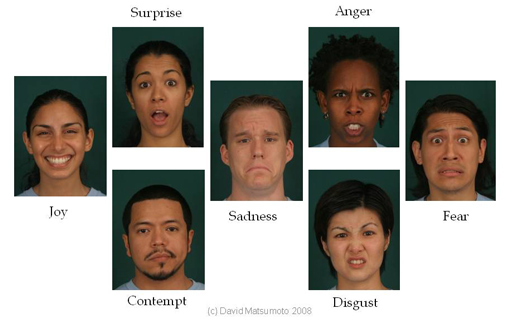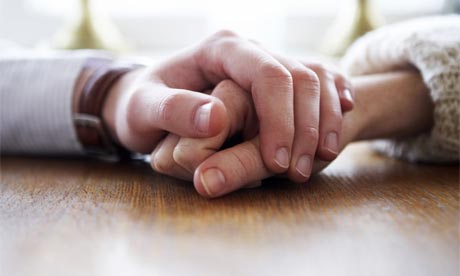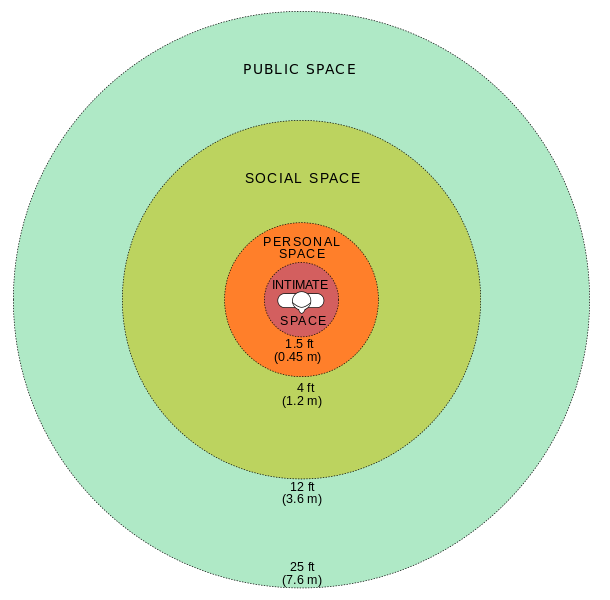
Nonverbal communication is the process of sending and receiving messages between two or more people without the use of words. We can communicate in a variety of nonverbal ways including through our posture, gestures, facial expressions, touch, eye contact, and vocal intonation.
Nonverbal communication is the process of sending and receiving messages between two or more people without the use of words.
We can communicate in a variety of nonverbal ways including through our posture, gestures, facial expressions, touch, eye contact, and vocal intonation.
Research suggests that nonverbal communication makes up over 60-70% of all that we communicate. In other words, how we say something is often more important than what we say.
Building relationships and social skills is therefore very dependent on our understanding of nonverbal communication, including our ability to accurately send the right social cues, as well as accurately receive the social cues others are sending us on a daily basis.
Communication is always a two-way street. We play the role of “giver” and “receiver” in every social interaction of everyday. And nonverbal communication is no different.
One of the most important things to know about nonverbal communication is that a lot of it happens unconsciously.
For example, we may not realize it, but when we are lying about something we tend to not look at someone in their eyes very much. We don’t do it purposely, it’s just something that happens naturally when we are trying to hide something.
By being more aware of other people’s nonverbal cues, we can gain a clearer understanding of what a person is really communicating to us.
And by being more aware of our own nonverbal cues, we can gain a clearer understanding of how to communicate more effectively and congruently.
The following sections in this article describe the main ways we communicate nonverbally. However, before we get started, I should point out that these are only guidelines.
There are a lot of reasons why people may act out certain behaviors – and not every behavior is necessarily a nonverbal signal.
For example, a person with their arms and legs crossed may be reserved or shy, or it could also mean that they are just cold.
Nonverbal communication can vary greatly depending on the person and the situation. Culture too can play a big role in differences in nonverbal communication.
It’s important to keep all of these factors in mind whenever reading body language. Remember, there are no concrete rules on what a particular behavior may signify – only general guidelines.
The last section in this article will provide exercises you can do to practice using body language more effectively in your real world social interactions.
Posture
Our posture is just one aspect of nonverbal communication that can signal a message about our personality and our mood.
Generally, an upright position while standing up, sitting, or walking is a sign of attentiveness and confidence, while a downward position is a sign of fatigue, boredom, or low confidence.
There are many different types of postures depending on what we do with our arms, legs, hands, shoulders, back, etc.
A closed body stance, where our arms or legs are crossed, is often seen as less socially engaging and less inviting than an open body stance, where our arms or legs are open and relaxed.
Here are some visual examples of the different ways our posture can communicate our mood. Ask yourself what is being communicated when you see each posture:

To me the first picture with the crossed arms and slouched neck comes off as annoyed, upset, or closed off. And the second picture with the open arms and upright neck appears more confident, engaged, or even authoritative.
This is just one visual example of how small changes in our posture can make a big difference in how people perceive us.
Next time you’re watching people interact – on TV, in a movie, or in real life – make note of their postures and how that contributes to what they are communicating to the world.
We can learn a lot about nonverbal communication by watching how others use it in their everyday life (I’ll elaborate more on this in a later section of this article).
You can also practice improving your own posture by using a full-length mirror. This is a great way to monitor your posture (while walking, sitting, or standing) and correct things you may find off-putting.
In addition, exercises like stretching and yoga can be especially useful for improving your body awareness and helping your body move more confidently and fluently.
Make note of your posture throughout the day and ask yourself what it is you’re broadcasting to others.
Gestures
Another big part of nonverbal communication are the gestures we make while interacting with others. A gesture is often a quick movement by our hands, face, or some other body part.
The average person knows hundreds of different gestures that they use on a daily basis depending on the person, situation, and what they are trying to communicate.
For example, common gestures we use include:
- Waving “hi” with our hand when we first see someone.
- Giving a thumbs up when someone does something good.
- Making an “okay sign” when we give someone permission to do something.
- Nodding “yes” or shaking our head “no.”
- Making a clenched fist when threatening someone.
- Giving the middle finger when we are angry at someone.
- Using a choking sign when we are choking on a piece of food.
- Tilting our head to the side when we are confused.
These are just some of the many gestures we use all of the time.
Some people become well-known for creating their own unique gestures, such as “Tebowing” used by the football player Tim Tebow as a form of celebration and gratitude. Or the “Clinton thumb” used by former President Bill Clinton whenever he wanted to emphasize something in one of his speeches.
For the rest of the day, pay attention to the gestures people use when they communicate to you – and the gestures you use when communicating to others. You’ll find they are an unavoidable facet of almost every social interaction. We practically can’t communicate without them.
Facial Expressions
Facial expressions are another important part of how we communicate to others.
Many times our facial expressions reflect the emotions we are feeling in that moment. And evolutionary psychologists believe this was a key adaptation in social species who rely heavily on understanding the thoughts and feelings of others in order to cooperate and survive.
Here is a picture chart (created by psychologist David Matsumoto) of the facial expressions behind basic emotions like joy, surprise, contempt, sadness, anger, disgust, and fear:

Source: Humintell
Microexpressions are a type of facial expression that happen unconsciously and only last between 1/25 to 1/15 of a second.
They happen extremely fast, but if you learn to catch them they can reveal a lot about what a person is actually thinking or feeling – even when they are trying to hide something.
Facial expressions are one of the most revealing ways we communicate to others. Pay attention to people’s faces more and you’ll learn a world of information about what is actually going on in their minds.
Tone of voice
How we speak is a form of nonverbal communication because it isn’t about the words we use, but how we say them.
Different characteristics of our voice can say a lot about what we are communicating. Two people can recite the same set of words, but their volume, pitch, speed, rhythm, tone, and emphasis can completely alter the message that is being conveyed.
For example:
- Speaking at a really low volume can be seen as shy, reserved, or untrustworthy, while speaking at a high volume can be seen as confident and outgoing.
- Speaking in a high pitched voice can sound more submissive and weak, while speaking in a low pitched voice sounds more authoritative and strong. This effect has been found to be particularly relevant to male speakers
- Speaking too fast can make someone seem nervous or as if they are trying to hide something. And speaking too low can come off as stupid or condescending. It’s important to find an appropriate speed. Previous research has shown that speaking at around 3.5 words per second has shown to be the most effective rate of speaking.
- Speaking with a different tone of voice can change the meaning of a sentence. Take three simple words like “I love you” and imagine the different ways people can say it and the different meanings being conveyed. A serious and heartfelt tone can be a sign of intimacy, but a joking or playful tone may just be a sign of friendship. And if you say “I love you” sarcastically, it can even sound hateful.
- Speaking with an emphasis on certain words can also make a big difference in meaning. For example, the sentence “I never said she stole my money” changes meaning each time you emphasize a different word. Speaking it out loud – each time emphasizing a different word – and hear the difference for yourself.
- Speaking with a healthy amount of pauses has found to be more effective than speaking without any pauses. This is because pauses give the listener a short break to process what you’re saying. According to research, people prefer speech with about 4 to 5 pauses a minute.
- Speaking with a healthy amount of animated speech is better than speaking monotone. That means it’s actually good to have changes in volume, pitch, speed, rhythm, tone, and emphasis, and pauses depending on what it is you’re trying to communicate. For example, an unusually long pause can create suspense, or a change in pitch or volume can keep the listener engaged and interested. On the other hand, too much animation in speech can also come off artificial and off-putting, so this is something where each person needs to find their own balance.
Tone of voice communicates a lot more than we realize, so it’s extra important to pay attention to how we speak to others. Often we may think we are saying the right things, but if our tone of voice doesn’t match up than people will see through it.
Eye Contact
Eye contact is the main way we determine if a person is paying attention to us and actually engaged in the social interaction we are having with them.
When individuals make eye contact with us while speaking, we tend to find them more interesting, likeable, honest, and confident in what they say.
And when individuals make eye contact while listening to us, we know that they are actually paying attention to us and absorbing what we are saying to them.

Meanwhile, lack of eye contact can come off as bored, shy, upset, or deceptive. When we fail at making healthy eye contact with others, it hurts our ability to connect with people in the best way possible. People either don’t trust us or they think that we don’t like them.

Studies show that good communication requires eye contact about 60-70% of the time.
So there’s a balance to be maintained. Holding eye contact 100% of the time can come off as intense, superficial, or creepy. It’s appropriate to take breaks and look away from time to time, and it’s natural for our eyes to move around while talking to others.
Like all nonverbal communication, eye contact can reveal a lot about our thoughts and feelings. When someone looks away after we ask them a question, it could mean that they are trying to hide something. Or when someone looks us straight in the eye while answering a question, it usually means they are being very honest and straightforward.
Unfortunately, some people manipulate eye contact to seem trustworthy when they are really lying. It’s important to not take any of this advice as absolute fact, these are merely guidelines.
One of the best ways to improve your eye contact with others is to practice the “triangle method.”
It begins by focusing your attention on just one eye (if you notice, you really can’t focus on both eyes at once), then shift your focus to the other eye, then move to the person’s lips, and then back to the first eye again.
This creates an invisible “triangle shape” on the person’s face. Like this:

Practice on the image above by focusing on the first eye (1), holding it for a couple seconds, moving to the next eye (2), holding it for a couple seconds, moving to the lips (3), holding it for a couple seconds, then moving back to the first eye (1), and holding it for another couple seconds.
Working on your eye contact with static images can help you improve eye contact in your real world interactions.
Another tip to become better with eye contact is to find out the color of someone’s eyes when you are speaking to them.
You can even make it into a game by asking yourself, “What color was their eyes?” after you’re done talking to them. Give yourself a point for every time you can remember it. And if you can’t answer it, then you weren’t paying enough attention. This little trick will help you become more comfortable with making eye contact.
Eye contact is a tremendously important aspect of all communication – and it’s something everyone should work on if they aren’t good at it already.
Breathing
A person’s breathing can communicate to us what that person is experiencing at any given moment.
Fast and heavy breathing is a sign of high arousal, possibly due to nervousness, or fear, or excitement, or joy.
Slow and steady breathing is a sign of low arousal, possibly due to relaxation, or comfort, or boredom, or sadness.
The meaning behind a person’s breathing will depend on the situation and what that person is responding to (in combination with other nonverbal cues).
If someone comes into a room and they are out of breath, you’re going to be concerned about what happened to them or why they are so worked up.
Whenever someone deviates from their normal rate of breathing, it usually means there’s been some change in their psychology too. Paying attention to these changes can give us extra clues on what might be going on in someone’s mind.
The best way to observe a person’s breathing is by watching the movements in their chest and shoulders.
The next time you’re with someone see if you can find their breathing rate and how it reflects that person’s current emotional state.
Clothing and Hygiene
Clothing and hygiene are another part of nonverbal communication that can reveal a lot about our moods and personalities.
To start, we know from everyday experience that certain types of people dress differently depending on their job, age, culture, sex, religion, confidence, and personal interests.
Someone who is a boy typically dresses differently than someone who is a girl. Someone who is a rapper typically dresses differently than someone who is a metal head. Someone who has a lot of money typically dresses differently than someone who is poor. And someone who has self-esteem about their bodies typically dresses differently than someone who has low self-esteem.
We shouldn’t judge a person solely based on what they wear, but we also can’t ignore that our clothing and hygiene often reflect who we are in many ways.
A person with a sloppy appearance, messy hair, and wrinkled clothes sends the message, “I don’t care.” While a person who takes care of their appearance is seen as much more attractive and confident.
As a general rule of thumb, take care of your body and dress in ways that you feel best suit your personality and interests. Pay attention to what other people wear and find things you like that you can build into your own style.
We like to think that our appearance doesn’t affect the way we are perceived by others, but it does to some degree, so we should dedicate some time and effort in how we present ourselves.
Clearly, if you’re going on a job interview or a first date, you want to look as best you can.
Touch
Touch has a very powerful impact on our relationships.
Harry Harlow’s famous studies in the 1960s showed that monkeys who receive warmth and physical comfort from a “wired monkey” dressed in a soft cloth showed better psychological development than monkeys who just had a “wired monkey” that just provided milk. This study exemplifies the instinctual need for touch in our bonding and relationships.
Humans are the same way as other animals. We crave touch so that we feel comfort, trust, and connection with others.
We use touch in a variety of ways to communicate what we are thinking and feeling. Some of these forms of touch include handshakes, high fives, hugs, kisses, pats on the back, holding hands, and brushing an arm.

Touch provides a direct physical connection to other people. It often shows that we care about others and support them in some way, but this form of communication can also be used in harmful ways.
Violence, abuse, and harassment are forms of touch that have a negative impact on others. They are the lowest and most primitive forms of communication. We should try avoiding these negative forms of touch at all costs because they only hurt others and build destructive relationships.
Touch can also be used in both a platonic way or romantic way. We use touch among family, friends, and coworkers to signify respect, friendship, joy, and love. And we can also use touch among romantic partners to heighten intimacy, sexual arousal, and deep connection.
In all its forms, touch communicates a message to the person we are interacting with. Not using touch in our relationships only limits our ability to fully connect with others in a positive way.
Proximity
Depending on the person and the situation, we all have a different “proximity” where we feel most comfortable with people.
Typically, we’ll let a romantic partner enter into our personal space more than we’ll let a coworker, and we’ll let a coworker enter into our personal space more than a complete stranger.
The social scientist Edward T. Hall identified that we each have different personal spaces depending on who we are talking to. This diagram shows the differences between these different comfort zones:

The important thing to take away here is to realize when we’ve entered into someone’s personal space and recognize when we are making someone uncomfortable (because we’re standing too close or too far away). There’s always an appropriate distance to each interaction that makes us more comfortable, safe, and relaxed.
Congruence
We’ve now discussed all the major components to nonverbal communication, including posture, gestures, facial expressions, tone of voice, eye contact, clothing, hygiene, touch, and proximity.
The last component to nonverbal communication is congruence, which is all these factors put together into a complete whole.
You see, none of these things are communicated in isolation, but as a group of signals. When these signals don’t match up people perceive it as mixed and confusing.
For example, if your voice sounds happy but you’re frowning or your posture is down, then people are going to see that you’re not being truthful or that you’re trying to hide something.
Our nonverbal communication needs to be clear and honest. When our nonverbal communication is consistent, people will perceive it as being truthful and congruent with what we’re saying.
But if our nonverbal communication is inconsistent, people will become skeptical and see through us.
How to Improve Nonverbal Communication in Your Everyday Life
There are two consistent ways we can work to improve our nonverbal communication in our everyday lives:
-
1. Observe other people’s nonverbal communication from an outside perspective.
2. Actively practice nonverbal communication in your day-to-day interactions.
While it can be helpful to read about nonverbal communication and better understand the theory behind these social cues, the only real way to master nonverbal communication is to witness it and practice it until it becomes natural to us.
Observing other people’s nonverbal communication
There are many different ways we can observe other people’s nonverbal communication and learn from it.
One of the easiest ways is to look at pictures and watch videos of people communicating, and then make note of the nonverbal cues they send and how they are received.
Today more than ever we have the resources to observe people socializing without having to be a part of the interaction itself.
We have television, movies, and the internet – all which provide us a way to view other people communicating and learn what works and what doesn’t work, without having to suffer the pain of our own mistakes and failures.
You can take virtually any movie, TV show, picture, or video on the internet and analyze the ways people are communicating nonverbally.
For example, political speeches and presidential debates are one amazing resource for learning how politicians use nonverbal communication in a masterful way that persuades millions of people on a daily basis. Watch these videos and make note of what makes their communication so effective to a mass audience.
Ask yourself questions about how the people you’re watching are communicating nonverbally:
- What is their posture like?
- What gestures are they using?
- What facial expressions are they making?
- What is their eye contact like?
- What is their tone of voice like?
- What are they wearing?
- How are they using touch?
- What’s the proximity between the people communicating?
- Is the person being congruent or incongruent with their nonverbal communication? Does it seem like they are being honest or dishonest?
- Is the other person responding to them in a positive way or negative way?
These questions can help you better analyze the interactions you witness everyday throughout your social world. You can then use the knowledge you gain and apply it to your own life.
This stuff also applies to observing social interactions in the real world, in public – but that can get trickier because you don’t want to get caught watching someone too much or come off as creepy.
I happen to have a nice balcony on a busy block where I can hang out and watch people walk by at any time of day. Other options could be going to a mall, or park, or somewhere in public where there are a lot of people hanging out and it’s easy to watch people without being too intrusive.
There is an art to being able to watch other people socialize and pick up on their nonverbal cues. Often you don’t even need to know what is being said to understand what is being communicated.
Practicing your own form of nonverbal communication
The most effective method of improving our nonverbal communication is to practice it in action. The more we do something, the more it becomes wired in our brains and the easier it becomes to do it on a daily basis.
One of the most obvious ways we can practice our nonverbal communication more is to just go out and socialize more.
You can’t learn all of this stuff sitting in your room. You have to actively go outside and engage other people, even if it means making a few mistakes before it becomes more natural for you.
For example, if you’re someone who isn’t so good with the “touch” aspects of your communication, make it a goal to integrate more touch into your daily interactions: give out high fives more, shake people’s hands when you meet them, give out hugs to strangers, rub someone’s back when showing support, etc.
You can’t change everything about your communication overnight, but you can work in small ways to gradually change how you communicate with others. Like any other set of skills however it does take time, work, and dedication.
You can also practice nonverbal communication on your own at home to help build these new habits. Some things you can try out include:
- Invest in a full-length mirror where you can work on your posture, gestures, facial expressions, eye contact, or fashion. By doing this you can see yourself as other people will see you in person, and when you look in the mirror you can ask yourself “What is it that I’m communicating to others when they see me? What nonverbal cues am I sending?”
- Work on your tone of voice by recording yourself reading a newspaper article or sharing a personal story. Then listen to what you recorded, make notes on your tone, and re-record it fixing the stuff you have issues with – maybe you speak too fast, or too softly, or you mumble your words, or you don’t express yourself enough.
- Role-play by yourself. Imagine how you would act with people in specific situations, then act them out as if they were really happening in front of you. Pay attention to how you act in these hypothetical scenarios and ask yourself how you might use nonverbal cues differently to improve how you communicate in real life. If you want, record it in video and play it back later.
- Role-play with others. Do mock interviews, dates, conversations, or speeches with your friends and ask them to give you constructive criticism on how to improve your nonverbal communication. This can be especially fun if you’re both working to improve aspects of your communication.
- Use YouTube or Google images to practice nonverbal cues. Search for videos or pictures of people looking directly at the camera, then practice maintaining eye contact or guessing what emotions are being expressed by the other person. This will help you become more comfortable at looking into people’s eyes and reading their expressions.
This whole article is an excellent starting point in becoming a master of nonverbal communication, but it’s not magic. You have to willingly go out in the real world and practice all of this stuff or it will do nothing for you. And it all takes time.
However, even just paying more attention to nonverbal communication in your day-to-day interactions can do wonders in helping you become more socially aware and socially intelligent.
Hopefully reading through this stuff has opened your mind to new ways of perceiving your everyday relationships, and that can begin to transform how you go about these relationships in the future.
Enter your email to stay updated on new articles in self improvement:
